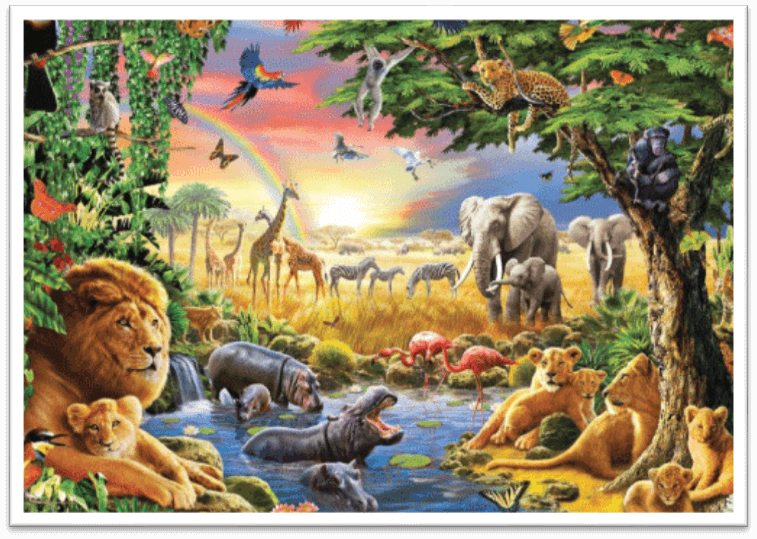VOCABULARY – ALL ABOUT ANIMALS AND PLANTS!
Plant: It is a living being that has a steam, leaves and roots.
Leaves: They are a part of a plant where the photosynthesis takes place.
Chlorophyll: It is a substance needed for photosynthesis, it helps to trap the light and it gives the green colour to the plant.
Flower: It is a part of a plant that helps it to reproduce.
Stem: It is a part of a plant that gives the plant stability and it transports water, minerals and food.
Roots: They are a part of a plant that support the plant and absorb water and nutrients from the soil.
Photosynthesis: It is the process in which green plants use sunlight to make their own food using sunlight, carbon dioxide, water and minerals.
Fruit: It is the part of a flowering plant that contains the seeds.
Seed: the small part of a flowering plant that grows into a new plant.
Petals: they are brightly coloured to attract insects.
Pistil: It is the female part of the flower. It has the ovary inside it.
Calyx: It surrounds the base of the flower. Each green leaf is called sepal.
Stamen: It is the male part of the flower. It produces the pollen.
Spores: A type of asexual reproduction in plants.
Ferns: Ferns reproduction is done with spores.
Shrubs: Plants with hard, rigid stems that are not usually very tall. They have multiple trunks and come from the ground.
Trees: Plants with a hard, rigid trunk that can be very tall. They usually have one trunk and branches higher up.
Herbaceous plants: Plants that have soft, green stems. Some of them are used in cooking.
Animal: It’s a living being that can move around. This group includes vertebrates and invertebrates.
Vertebrates: They are animals that have internal skeleton, backbone.
Skeleton: Bones and cartilage in vertebrate animals. Skeletons support the body and protect organs.
Mammal: an animal with fur or hair on its skin and a skeleton inside its body. Mammal mothers produce milk to feed their babies.
Reptile: a vertebrate animal of a class that includes snakes, lizards, crocodiles, turtles, and tortoises.
Fish: Fish are aquatic vertebrate animals that have gills and scales.
Bird: a vertebrate animal with two wings, two feet, and a body covered with feathers.
Amphibian: vertebrate animal of a class that comprises the frogs, toads, newts, salamanders, and caecilians.
Viviparous: Animal that gives birth to developed babies.
Oviparous: animals that reproduce by hatching eggs outside the body of the parent.
Ovoviviparous: producing young by means of eggs which are hatched inside the body of the parent.
Gills: the organ used for breathing by fish and other animals that live in water.
Lungs: two organs in the chest that are used in breathing. Lungs are found in mammals, birds, reptiles, and some other animals.
Metamorphosis: the changes in form of some living things as they grow.
Invertebrates: an animal that does not have a backbone or an internal skeleton.
Molluscs: an invertebrate animal that live in water. They have soft bodies, sometimes covered by a shell.
Arthropods: an invertebrate animal that have external skeleton.
Insects: Arthropods with 6 legs.
Crustaceans: Arthropods with 10 legs.
Arachnids: Arthropods with 8 legs.
Myriapods: Arthropods with more than 10 legs.
Worms: an invertebrate animal with a long, thin, round or flat body.
Sponges: a sea animal that has a body with many small holes that water can flow through.
Echinoderms: starfish.
Jellyfish: Jellyfish.



